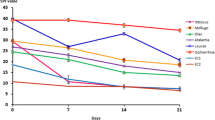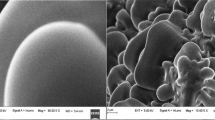Abstract
Natural substances extracted from plants have recently been considered as potential sunscreen resources owing to high ultraviolet ray absorption and antioxidant activity. The decrease in the intensity of UV radiation reaching the skin through sunscreens may reduce the risk of sun-induced skin cancer. The present study attempts to develop sunscreen lotions, possessing broad spectrum of anti-UV radiation effectiveness with reduced concentration of chemical UV filters, from the extracts of bioactive products such as Curcuma longa L. (Zingiberaceae), Aloe vera (Liliaceae) and Alpinia galanga Willd. The effectiveness of the product was evaluated using Sun Protection Factor (SPF). Curcumin was selected as potential bioactive agents due to their phytochemical compositions possessing considerable content of polyphenolic compounds and Alpinia galanga is used as key ingredient in various commercial sunscreen lotions as it has skin protectant action against UV rays and boosts the activity of conventional sunscreens. The sunscreen lotions were prepared using three different compositions F1, F2 and F3 and evaluated for their stability, safety and SPF. Results showed that the sunscreen lotions were non-mutagenic, non-irritant, stable and possess SPF for normal skin. The efficacy when tested with a standard was observed to be same as that of a marketed sunscreen with SPF 55 and SPF 20. From the present study, formulation F2 having curcumin extract was proved to be stable and effective with high SPF compared to F1 and F3.

Similar content being viewed by others
References
Aburjai T, Natsheh FM (2003) Plants used in cosmetics. Phytotherapy Res 17:987–1000
Ashawat MS, Saraf S, Swarnlata S (2006) Sunscreen properties of natural skin care lotion. Bioscie Biotechnl Res Asia 6:253–256
Ashawat MS, Saraf S, Swarnlata S (2005) Antisolar activity of R Damnesia and T. Errecta. Planta Indica 2:26–28
Baby AR, Maciel CPM, Kaneko TM, Velasco MVR (2006) UV-spectrophotometric determination of bioflavonoids from a semisolid pharmaceutical dosage form containing Trichilia catigua Adr. Juss (and) Ptychopetalum olacoides Bentham standardized extract: analytical method validation and statistical procedure. J AOAC Int 89:1532–1537
Banov D, Baby AR, Bosco LM, Kaneko TM, Velasco MVR (2006) Caracterizac¸ ão do extrato seco de Ginkgo biloba L. em formulac¸ ões de uso tópico. Acta Farm Bonaerense 25:219–224
Butler H (2000) Poucher's perfumes, cosmetics and soap. quality, stability and safety assurance. Kluwer Academic Publishers, Dordrecht, pp 507–621
COLIPA (2006) COLIPA Guidelines: International Sun Protection Factor (SPF) Test Method
Deep C, Saraf S (2008) Novel approaches in herbal cosmetics. J Cosmet Dermatol 7:89–95
Faurschou A, Wulf HC (2007) The relation between sun protection factor and amount of sunscreen applied in vivo. Br J Dermatol 156:716–719
F’guyer S, Afaq F, Mukhtar H (2003) Photochemoprevention of skin cancer by botanical agents. Photodermatol Photoimmunol Photomed 19:56–72
Gaspar LR, Maia Campos PMBG (2003) Rheological behavior and the SPF of sunscreens. Int J Pharma 250:35–44
Henry MD (1997) Baird ed. Manual of cosmetic analysis. Analysis of creams and lotions. USA, pp 32–33
Hiremath SSP, Dasankoppa FS, Nadaf A, Jamakandi VG, Mulla JS, Sreenivas SA, Sholapur HN, Ahmed A, Nanjunda Swamy NG (2008) Formulation and evaluation of a novel in situ gum based ophthalmic drug delivery system of linezolid. Sci Pharm 76:515–532
Katiyar SK, Elment CA (2002) Green tea polyphenolic antioxidants and skin photoprotection. Int J Oncol 18:1307–1313
King A, Young G (1999) Characteristics and occurrence of phenolic phytochemicals. J Am Diet Assoc 99:213–8
Mansaur JS (1986) Determinacao d fator de proteaco solar por espectrofotometria. Anal Bras Dermatol 61:121–4
Maron DM, Ames BN (1983) Revised methods for Salmonella mutagenicity assay test. Mutat Res 113:173–215
Movileanu L, Neagoe I, Flonta ML (2000) Interaction of the antioxidant flavonoid quercetin with planar lipid bilayers. Int J Pharm 205:135–146
Multimer M (1956) Spreadability determination by an apparatus. J Am Pharm Asso 45:212–214
Onodera S, Yoshimatsu K, Saitoh H, Uchida A (1998) Behavior of mutagenic formation from phenolic compounds in water disinfection with chlorine and their mutagenic potential formation. Jpn J Toxicol Environ Health 44:289–299
Robbins RJ (2003) Phenolic acids in foods: An overview of analytical methodology. J Agric Food Chem 31:2866–87
Rolim A, Oishi T, Maciel CPM, Zague V, Pinto CASO, Kaneko TM, Consiglieri VO, Velasco MVR (2006) Total flavonoids quantification from O/W emulsion with extract of Brazilian plants. Int J Pharm 308:107–114
Sagarin E (1957) Cosmetics, Science, and Technology. Interscience Publishers, Inc, New York, p 1014
Santo EP, Freitas ZM, Souza KR, Garcia S (1999) In vitro and in vivo determinations of sun protection factors of sunscreen lotions with octyl methoxycinnamate. Int J Cos Sci 21:1–5
Sayre MR, Stanfield J, Lott DL, Dowdy JC (2003) Simplified method to substantiate SPF labelling for sunscreen products. Photodermatol Photoimmunol Photomed 19:254–260
Sayre RM (1993) Correlation of in vivo tests, in vitro SPF predictions - a survey of published studies. Cosmetics& Toiletries 108:111–114
Shrivastava S, Kapoor S, Saraf S (2003) Novel preparation and evaluation of lotion containing aloe gel beads. Ind J Pharm Edu Res 42(2):77–80
Tabrizi H, Mortazavi SA, Kamalinejad M (2003) An in vitro evaluation of various Rosa damascena flower extracts as natural antisolar agent. Int J Cosmet Sci 25:259–265
Velasco MVR, Balogh TS, Pedriali CA, Sarruf FD, Pinto CASO, Kaneko TM, Baby AR (2008) Associac¸ ão da rutina com p-metoxicinamato de octila e benzofenona-3: avaliac¸ ão in vitro da eficácia fotoprotetora por espectrofotometria de refletância. Lat Am J Pharm 27:23–27
Verschooten L, Declercq L, Garmyn M (2006) Adaptive response of the skin to UVB damage: role of the p53 protein. Int J Cosmet Sci 28:1–7
Acknowledgements
The authors express their sincere thanks to Padmashri Dr. M. MohanBabu, Chairman, Sree Vidyanikethan Educational Trust, Tirupati, India for providing the necessary facilities to carry out this work.
Author information
Authors and Affiliations
Corresponding author
Rights and permissions
About this article
Cite this article
Rasheed, A., Shama, S.N., Mohanalakshmi, S. et al. Formulation, characterization and in vitro evaluation of herbal sunscreen lotion. Orient Pharm Exp Med 12, 241–246 (2012). https://doi.org/10.1007/s13596-012-0069-z
Received:
Accepted:
Published:
Issue Date:
DOI: https://doi.org/10.1007/s13596-012-0069-z




